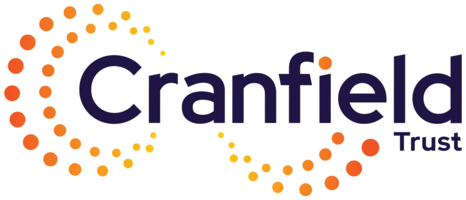There’s no doubt that the last few months have played havoc with charity finances and updating your forecast when there’s so much uncertainty can feel like an impossible challenge.
Cranfield volunteer Stuart Walker from Yellow Tomato looks at ways you can refine your forecasting approach to take account of uncertain times.
Forecasting - more art than science?
One of the things that always surprises people is when I say that forecasting is more an art than a science.
Non-finance professionals see a series of complex excel workbooks and assume that everything is based on scientific principles that then naturally produce a defined outcome.
But the truth is that every forecast has its own elements of uncertainty and the important thing to remember is that it is more about identifying risks and opportunities rather than forecasting the amount of stationery you are going to buy down to the last penny!
Understanding where the risks lie, where the opportunities might present and how this all fits together is where the art comes in and this is especially important as we enter another period of uncertainty.
Having worked as a Financial Director through other economic upheavals I’ve developed a few methods that I use to make sure that I’m spotting the important aspects of my budgets and bringing them to the attention of the board.
Tip #1 - Work out what is important and what isn’t
This is something that boards should really do anyway but during times of uncertainty, it is even more vital.
You need to clearly identify the small number of items that really make a difference to the health of your organisation.
Most NFPs will have 6 or 7 Key Performance Indicators (KPIs) that signpost the health of the charity and identify where things might be going awry.
This is an excellent way of cutting through the noise because when all about you is in turmoil you know that as long as your KPIs are looking good your charity is going to be OK.
Identifying your KPIs can be challenging because they will vary between different types of organisation but they will generally split down into operational or financial.
As an example, operational KPIs might include website hits.
If you know that it takes 100 website hits to produce £1 worth of donations then you can spot when you are heading for income trouble as soon as your site activity drops.
One of the KPIs that charities often use is cash coverage for operational costs.
In other words how long could your charity continue with no cash coming in?
Once you have decided on your KPIs then you can look at putting in measures to ensure that they are monitored and action is taken to rectify problems before they become serious.
One other point about KPIs; if there isn’t a lever attached, in other words, if there is no action you can take to change the number, then it isn’t a KPI!
Tip #2 - Make sure your numbers are up to date
You’d expect an accountant to say that, wouldn’t you?
But forecasts are so much more reliable if they are built up using the very latest of information, especially during rapidly moving conditions.
Get your systems up to date, make sure your suppliers are submitting invoices promptly and then use the results to build your forecast rather than including an element of guesswork.
And whilst we are on the subject of systems...
Tip #3 - Use your systems to lighten the load
When things are moving rapidly you need to make sure that you have quick access to information so using your systems to produce data quickly and easily is the way to go.
This takes an investment of a bit of time upfront to learn what functionality your systems have but once you’ve got it up and running it will save you huge amounts of effort and get you the information you need when you need it.
Examples would be Actuals Vs Budget report in your accounting software or contact reports in your CRM.
If you can’t work out how to do something on your system then I always suggest hitting YouTube or Vimeo and checking out a video or two.
Tip #4 - Develop your environmental scanning
Environmental scanning is the posh name for keeping your ear to the ground.
Numbers are fine for forecasting but being able to add in more information about the way that the world is moving in the future makes your planning much more robust.
A good example of this would be producing your forecast with an analysis of the likelihood of entering a second lockdown.
By scanning events in other countries we could see that further restrictions were likely here and so using that to refine your forecast and highlight additional risks adds so much richness.
Tip #5 - Don’t forget the opportunities
So far we’ve talked a lot about risk and the bad side of forecasting and this tip follows on from your environmental scanning.
Yes, it is true that trustees have a duty to assess and mitigate risk for their organisation but it is also true that some clouds do have a silver lining.
For example, a charity that I am working with at the moment was able to design and develop a service specifically to help people during the last lockdown and they received emergency funding to put it in place.
They spotted the opportunity through their environmental scanning and rapidly put a proposal together for their trustees which resulted in a successful bid for funds.
Tip #6 - Hold strong opinions weakly
There have been far too many examples over the years of leaders who have held very strong opinions and who have ridden roughshod over any contrary information.
The problem is that as humans we tend to naturally ignore evidence that doesn’t fit our preconceived opinions.
In forecasting, this injects an unhealthy dose of bias and means that your strongly held belief could be the cause of your organisation missing vital clues.
Be open to conflicting opinions and submit your forecasts and the assumptions behind them to scrutiny, not just of your trustees but your operational staff, peers in other organisations and people you trust outside the NFP sector.
Test your theories, make sure your assumptions are sound and build this into your forecast.
Get as many differing views as you can because only by introducing diverse opinions will you spot issues that may end up becoming serious.
Tip #7 - Forecast, Forecast, Forecast
When times are settled we can get away with doing a budget and probably a reforecast after six months but in a rapidly moving situation, this isn’t enough.
At the very minimum, finance staff should be running a cash flow forecast and updating it every day with the latest information.
Trustees should also have access to regular updates on the health of the trust and subject to staffing constraints I would suggest that a monthly finance update is the minimum they should expect.
I’m not advocating that a very small charity should be dedicating a whole member of staff to producing forecast after forecast but what I am saying is that major changes in assumptions or performance should be reflected as soon as possible.
It’s more important than ever that in a time of uncertainty, trustees have access to the latest information and that the risks can be assessed and acknowledged.
In summary; forecasting is vital for a healthy charity
If you want to chart a safe course through choppy waters then forecasting has to be the key.
Having a sensible forecast that is built on sound assumptions, is properly reviewed and uses environmental scanning to add depth and understanding is incredibly valuable for trustees.
Developing KPI’s means that the organisation can cut through the noise and focus on what is really important and by utilising the capabilities of your systems you can make sure that the workload is kept to a reasonable level.
Good luck with your forecasts!




